
| Theme: 10II Simulator | |||
 |
||||||
| Hypothesis-driven physical examination using a high-fidelity patient simulator in undergraduate medical education in Japan |
 |
|||||
|
||||||
Background
- Physical examination(PE) and clinical reasoning(CR) are core competencies for both clinicians and medical students.
- PE and CR have been taught separately in many medical schools.
- Head-to-toe (H-T-T) style comprehensive PE is taught to students in many schools.
【 PE in a real clinical situation 】
Based on some diagnostic hypothesis
( >>> H-T-T style )
Hypothesis-driven physical examination
(HDPE)
- Simultaneous educational model for both PE and CR
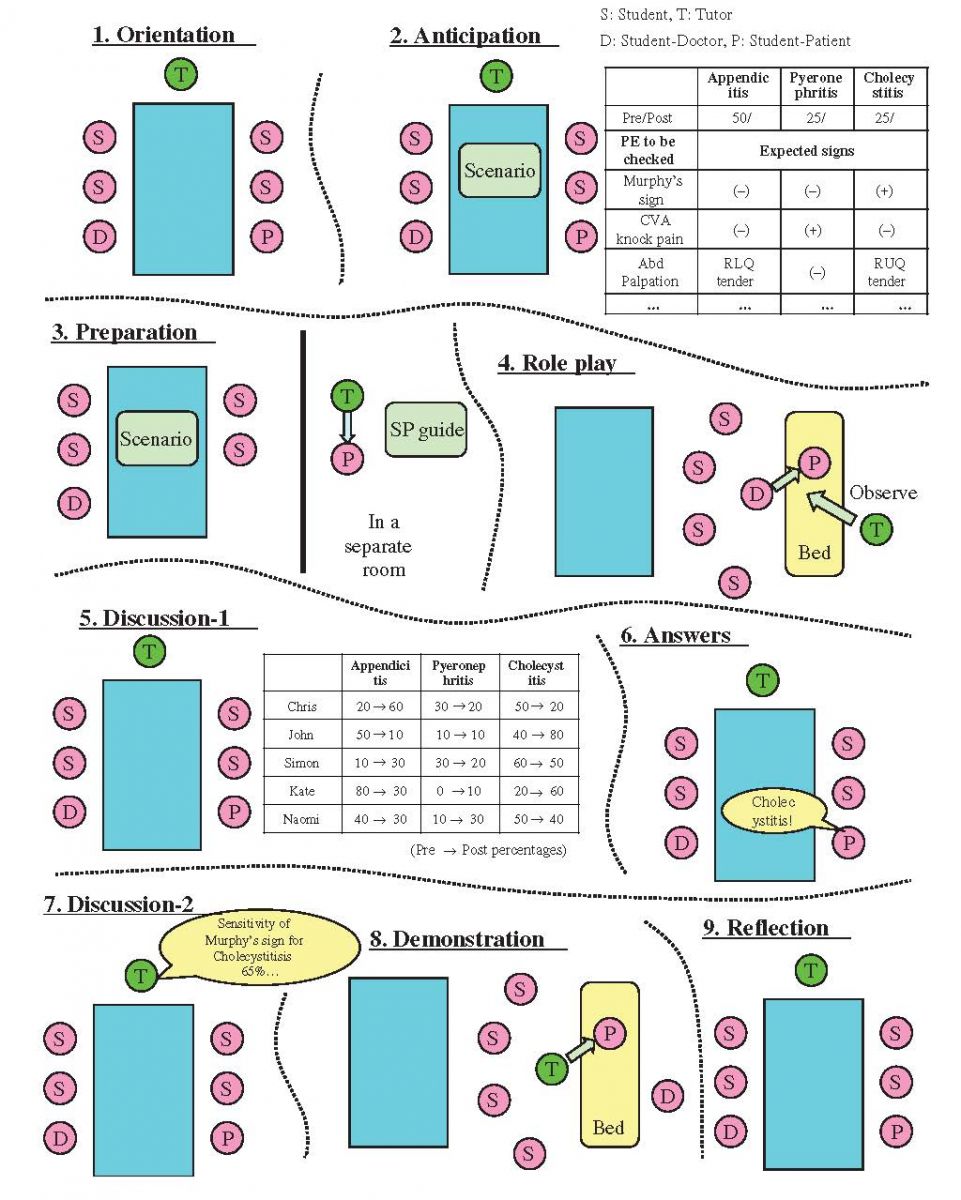
High-fidelity patient simulator
- Physical findings and status change can be programmed like a real patient

Conclusion
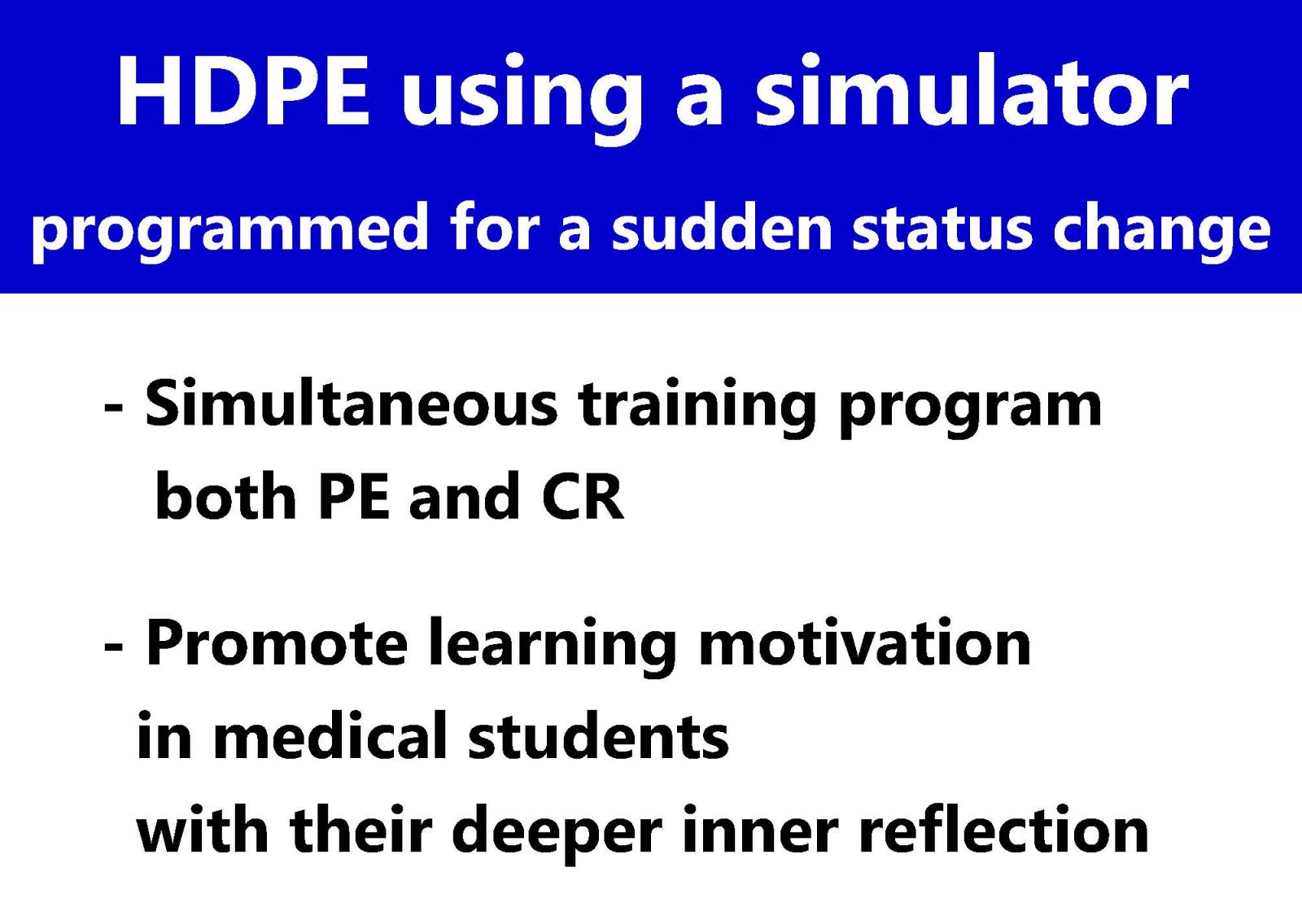
Take-home Messages
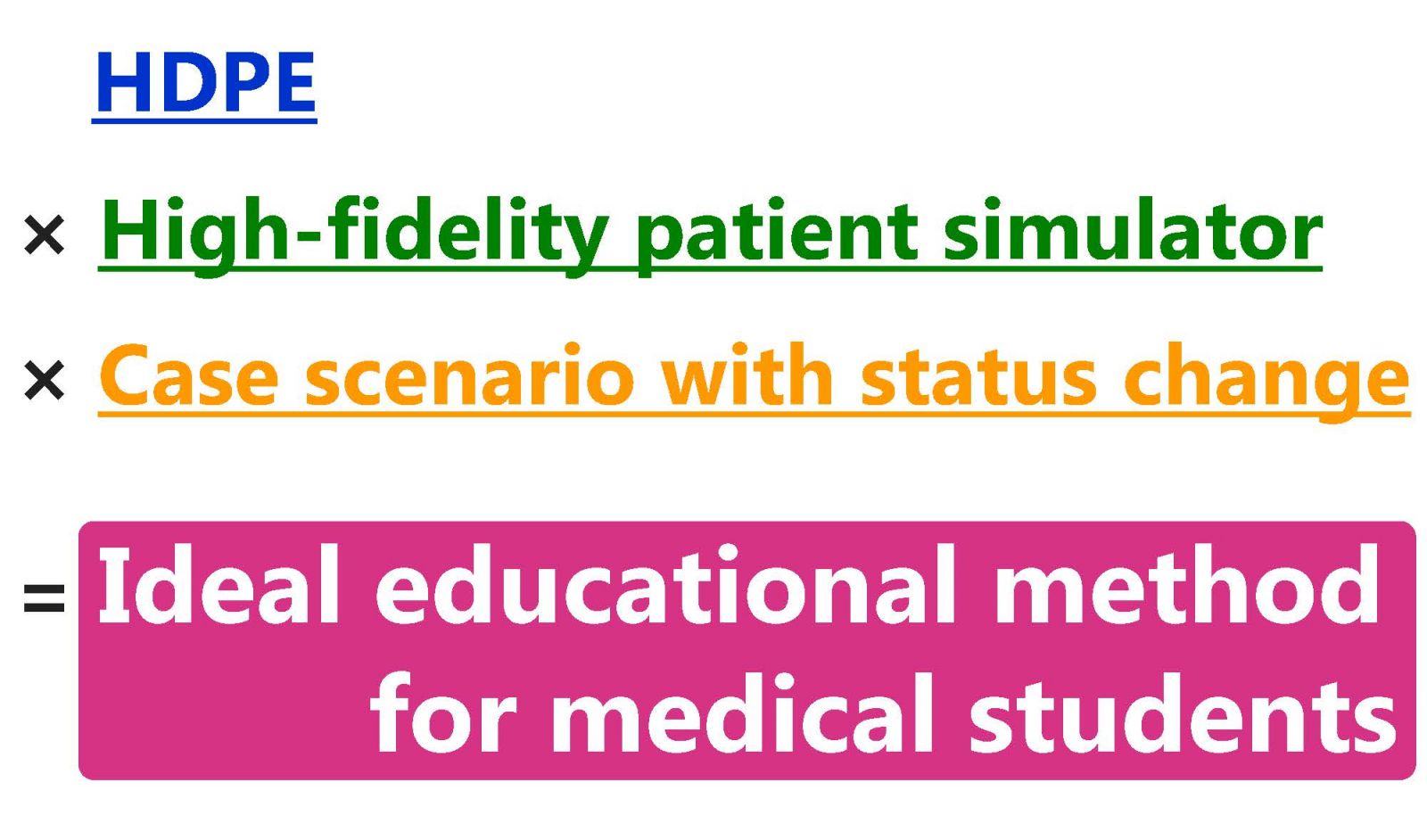
References
- Nishigori H, Masuda K, Kikukawa M, et al. A model teaching session for the hypothesis-driven physical examination. Med Teach. 2011; 33: 410-417.
- Otani T. “SCAT” a qualitative data analysis method by four-step coding: Easy startable and small scale data-applicable process of theorization. Bulletin of the Graduate School of Education and Human Development (Educational Sciences). 2007–2008; 54: 27-44 (In Japanese).
- Fukushi M, Nago N. Clinical educators unable to accept the clinical medical training system and residents with no sense of belonging: Results of needs assessment involving clinical educators in faculty development workshops. Medical Education (Japan). 2011; 42: 65-73 (In Japanese).
Summary of Work
Summary of Results
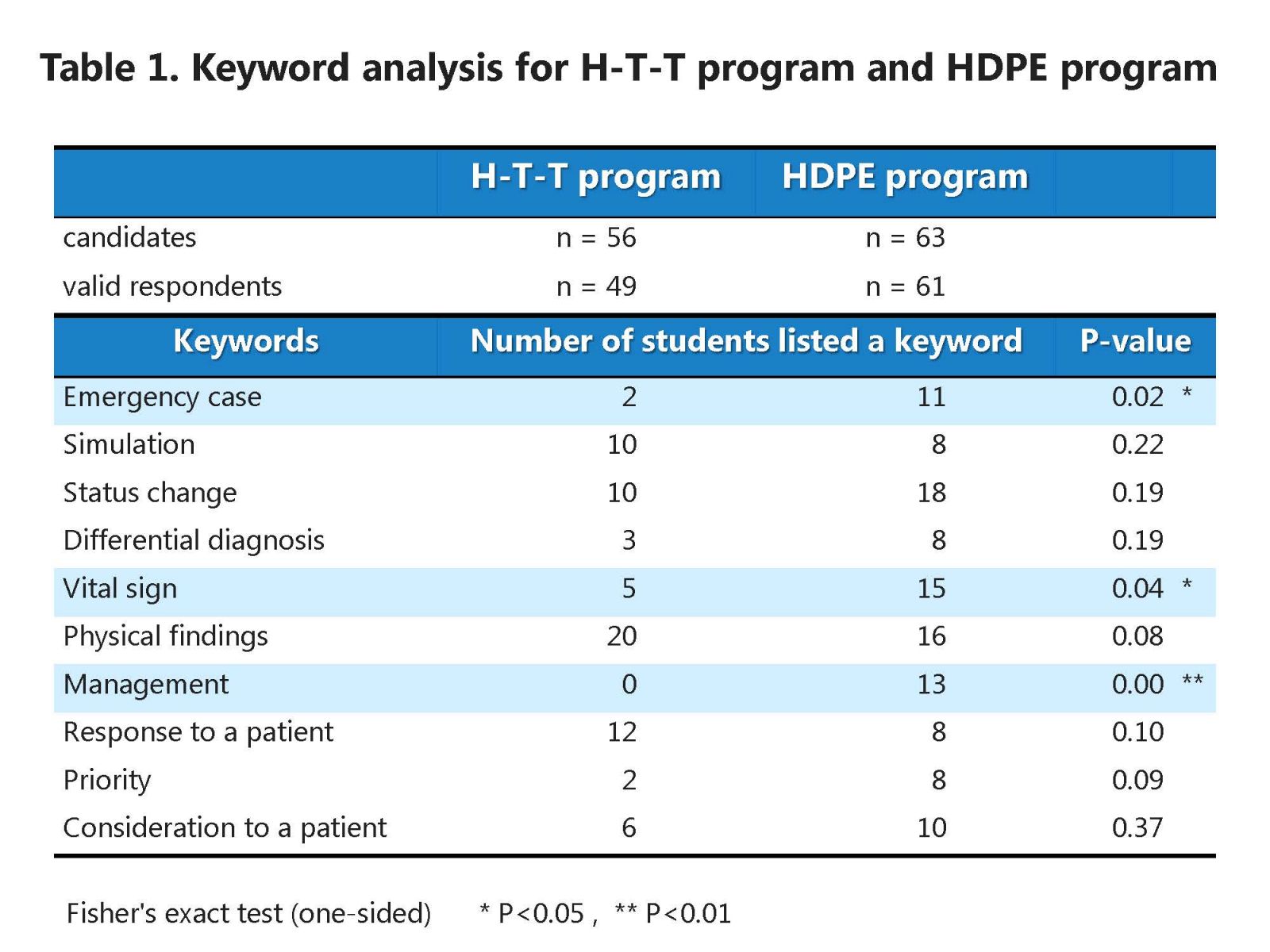
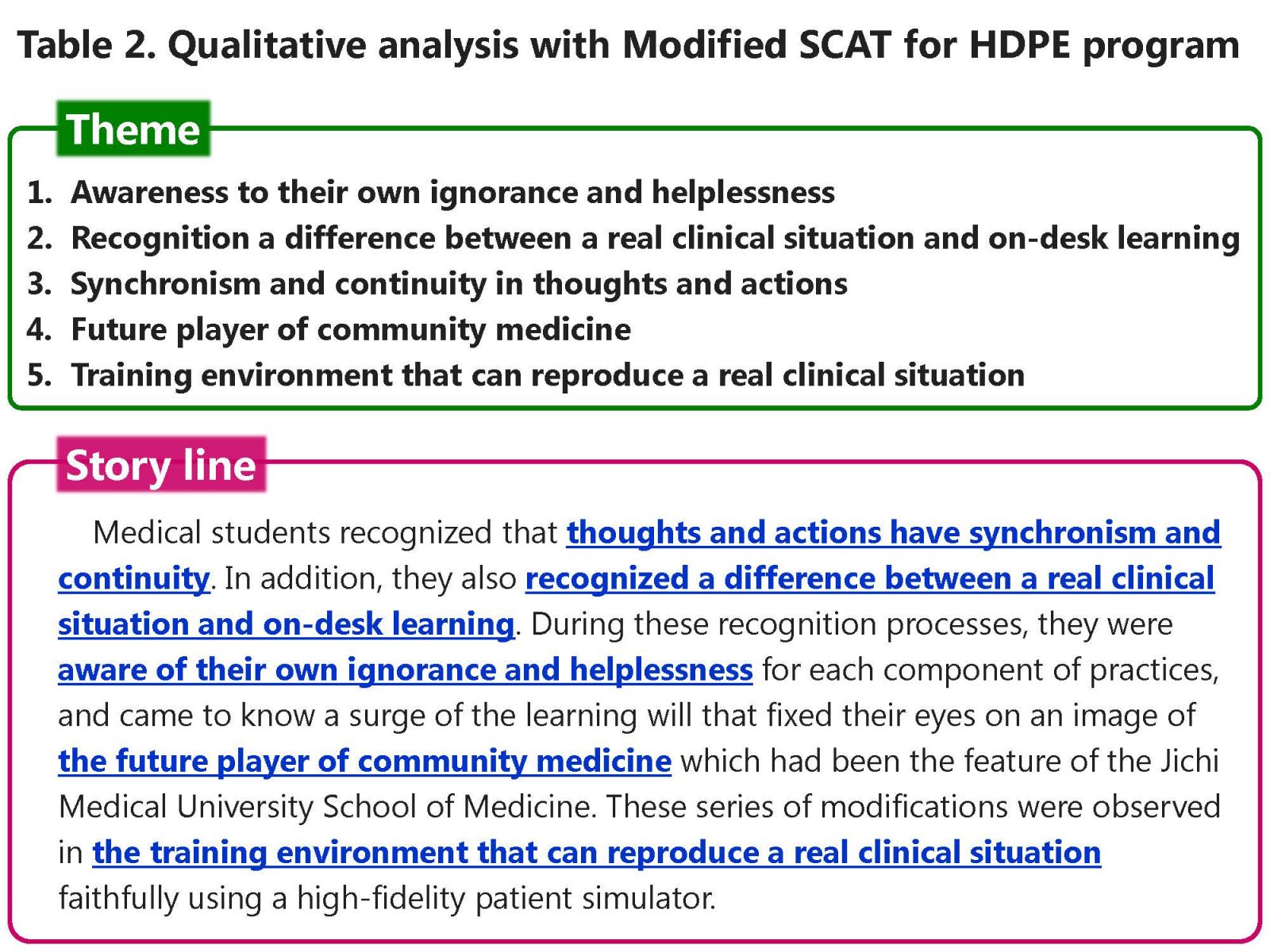

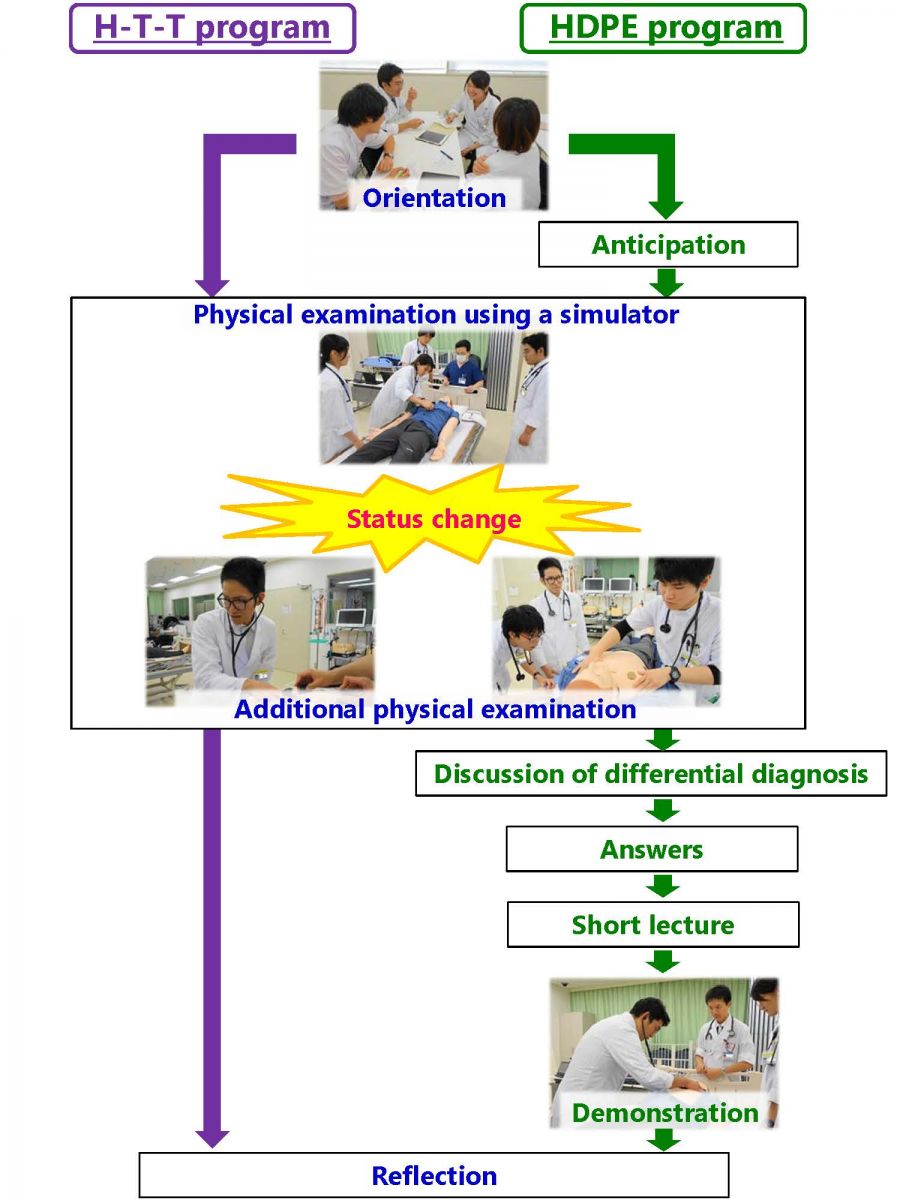
 Send Email
Send Email